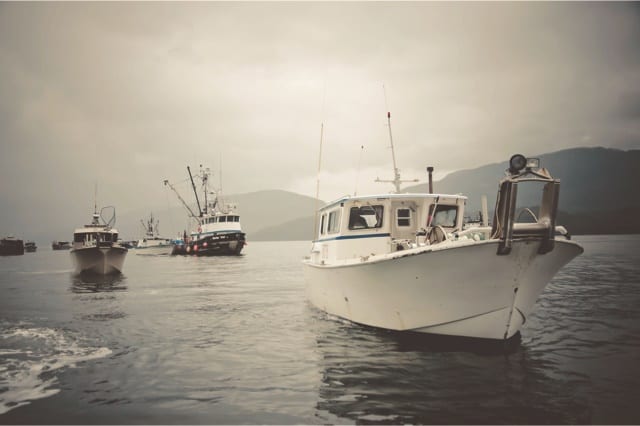
Salmon, as one major processor observed, is always complicated.
The Prince William Sound commercial salmon forecast was still being calculated in late December, with state fisheries biologists planning to have it out by mid-January 2018.
Processors were upbeat, meanwhile, about the Bristol Bay sockeye salmon forecast issued in November, which predicts a run of 51.28 million red salmon, and a Bristol Bay harvest of over 39 million fish. That forecast came on the heels of another strong sockeye season in the Bay, with a harvest of 37.7 million red salmon valued at $209.9 million.
Preliminary harvest and value figures for Alaska’s 2017 salmon fisheries showed a statewide harvest of 224.6 million salmon valued at $678.8 million, including 56 million salmon of all species in Prince William Sound value at nearly $128 million.
The Alaska Department of Fish and Game harvest breakdown for Prince William Sound, by species and value, included 14,000 kings, $1.977,000; 1.4 million sockeyes, $20,555,000; 554,000 coho, $5.9 million; 48.7 million pink, $70.3 million; and 5.4 million chum, $29.2 million.
For Cordova District Fishermen United, 2017 was an okay year, said Jerry McCune, president of CDFU and United Fishermen of Alaska. The prices were good for Copper River sockeyes, really high at the beginning of the harvest, but the run itself was mediocre, he said.
Chum salmon from the Copper River fishery did much better, garnering 80 cents a pound, up 10 cents from a year earlier, he said.
McCune also addressed the issue of the greying of the fleet, saying he doesn’t think it’s as huge a deal as some people make it out to be. “But I also think we need to provide (young fishermen) the information on loan programs, and they should look at the business side of it because it’s going to be a lot of hard work the first three or four years, and equipment is not as cheap as it used to be. “We have a lot of young people (in Prince William Sound) and they are working hard. A lot of them are coming from fishing families,” he said.
CDFU, a strong supporter of Alaska Sea Grant’s Young Fishermen’s Summits, sent four of Cordova’s young harvesters to the annual conference in Anchorage.
Overall, McCune said, he’s pretty enthusiastic so far about the upcoming season. “The water is supposedly getting cooler. We still might have a few (weather) events sticking around. The ocean always throws us something,” he said.
Jeremy Botz, area management biologist for ADF&G in Cordova, confirmed that the harvest of sockeyes for the Copper River fishery and Prince William Sound came in below forecast, and over forecast for Chinooks and cohos. For Prince William Sound, the chum salmon also came in over forecast, he said.
The past year saw different run entry patterns into Prince William Sound, with the salmon coming in later and in more compressed numbers. In some areas, they came in further to the east and seemed to mill in the Sound for a while before approaching terminal areas, he said.
Forrest Bowers, deputy director of the Division of Commercial Fisheries, characterized the overall 2017 Alaska salmon season as a banner year both for the industry and the state. “Tremendous harvests occurred across Alaska from Kotzebue to Southeast, highlighted by an all-time record statewide chum salmon harvest,” Bowers said in a report issued in early October. “In addition, 2017 is the third year in a row statewide sockeye salmon harvest exceeded 50 million fish. Record wild salmon harvests like these are a testament to Alaska’s sound, science-based management, the professionalism of ADF&G’s staff, and thoughtful stakeholder engagement,” he said.
Andy Wink, who maintains the salmon watch for Juneau’s McDowell group, said that as long as farmed salmon prices stay where they are – still high, but down a bit this year – it will benefit marketability of all salmon species.
The bigger issue is that sockeye have been doing really well. If the quality is really good, people will pay a better pride for better fish, he said.
Previously frozen fillets of wild sockeye salmon are now selling year-round in Costco stores in Anchorage for $9.99 a pound.
In his report to the Alaska Seafood Marketing Institute’s all hands meeting in Anchorage several weeks ago, Wink noted that the industry catches and processes enough seafood annually to feed everybody in the world at least one serving of Alaska Seafood, or one serving for every American for more than a month.
Ocean Beauty’s Tom Sunderland said one sector to keep an eye on will be growth in domestic markets for fresh, frozen and refreshed salmon in retail markets, particularly home delivery products. “That’s the area that everybody has their eye on for growth right now,” he said. We don’t know how big it’s going to be, but there is a lot of energy behind it. This is a brand new class of trade,” he said.
The big wild card for the 2018 salmon fisheries, will be pink salmon, he added.
“People are going to be extra nervous. I’m betting that ADF&G will manage the upstream escapement appropriately, so we are back to a more normal even year. I have faith in ADF&G’s ability to manage the fishery as well as they can,” he said.














